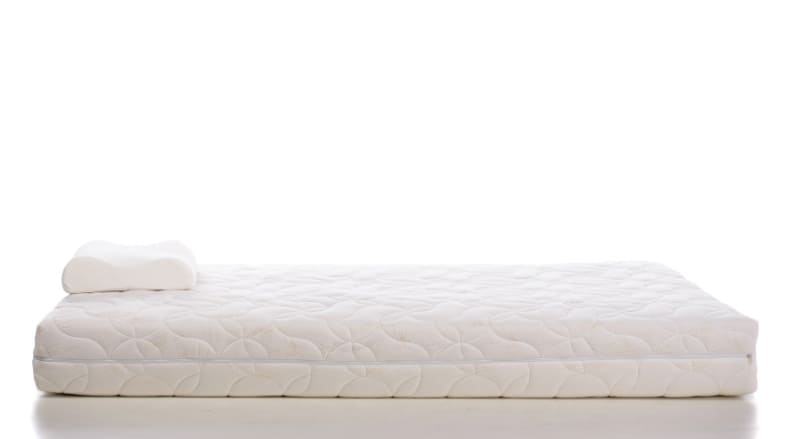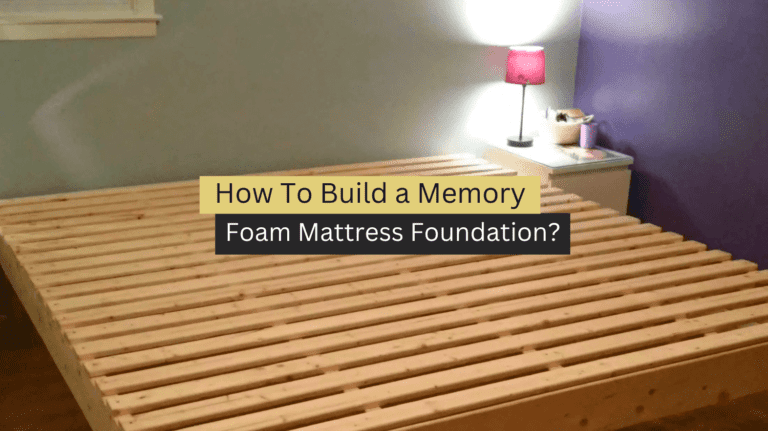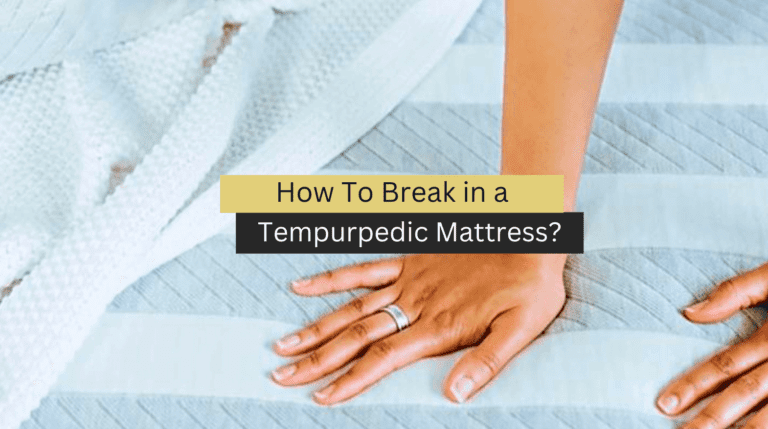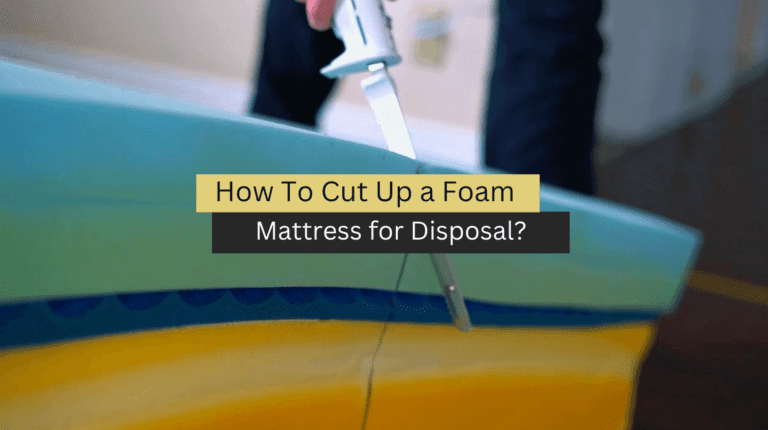How to Know if Your Mattress Has Mold : Signs and Symptoms
Sleep is essential for our general health and well-being. We spend one-third of our lives on mattresses, which must be clean and sanitary. Mold development is one of the people’s most prevalent problems with their mattresses. Mold not only emits unpleasant odors but can also create several health issues. Respiratory problems, allergies, and even asthma episodes are among them. Furthermore, long-term mold exposure might damage the immune system. As a result, it is critical to recognize the signs of mold growth in mattresses and take the necessary precautions for prevention and removal.
In this post, we will look at the consequences of mold growth in mattresses, how to detect it, and how to prevent it.
Factors Contributing to Mold Growth in Mattresses

Mold is one of your mattress’s most prevalent adversaries, and it can thrive under specific conditions. These four elements can contribute to the ideal environment for mold growth in your mattress.
High levels of humidity
High humidity levels can exacerbate mold growth in mattresses. Most common mattress materials, such as memory foam, have naturally porous surfaces that absorb moisture from various sources. Over time, the accumulated moisture can promote mold growth, especially in places with high humidity levels, making it difficult to remove all evidence of mold completely.
Liquid spillages
Mold can grow on any liquid that is spilled on a mattress. Mold spores can develop quickly due to the moisture retained in the mattress, resulting in a serious mold problem. Furthermore, the bedding and linens on top of the mattress that absorbs the spills can become damp, making mold removal more difficult.
Low air circulation
Mold growth can be exacerbated by poor ventilation and lack of light exposure. When your mattress is flat on a surface, it does not receive proper air circulation, accumulating moisture and producing a damp environment. This and insufficient light exposure offer ideal circumstances for mold spores to grow.
Bad mattress choice
Moisture buildup on a mattress can be caused by various factors, including low-quality waterproofing, inferior or inappropriate materials that retain moisture, and even bad construction. Low-priced mattresses have inadequate waterproofing, allowing sweat, spills, and other moisture sources to infiltrate the mattress and induce mold growth. Selecting the greatest waterproofing, tight coverings, breathable fabrics, and well-constructed mattresses will help avoid moisture buildup and, as a result, mold formation.
Addressing these contributing elements will help avoid mold formation, making monitoring moisture levels critical, ensuring sufficient ventilation, and choosing a decent mattress construction.
How to Tell If Your Mattress Has Mold: Signs and Symptoms
Now that we’ve addressed some of the most prevalent causes of mold growth let’s look at some of the mold symptoms in your mattress.
Sight
The emergence of black or green stains on your mattress is the most evident indicator of mold growth. These spots, which can appear anywhere on your mattress, such as the surface or the corners, indicate mold growth. They arise because mold grows in humid, damp settings, and when mold forms in your mattress, it usually grows in clusters.
Smell

The odor caused by mold growth is frequently the most obvious sign of mold in your mattress. Mold development in a moist and humid atmosphere can produce an unpleasant, sometimes powerful, musty, damp odor. If you notice an odor originating from your mattress that does not appear normal, inspect it for mold spores.
Health conditions
Mold growth in your mattress can cause various allergic reactions, including difficulty breathing, a runny nose, itching, sneezing, watery eyes, and asthmatic symptoms. Mold spores in your sleeping environment might aggravate allergies or respiratory difficulties, especially if you are already sensitive to them.
Skin discomfort
Mold in the mattress can create skin problems, such as rash or irritation on skin contact, in addition to the symptoms of the health condition. Adults and children alike can be affected by mold spores in their sleeping settings. Inspecting your mattress if you experience any skin discomfort or irritation while sleeping is highly recommended.
Any of these signs and symptoms could indicate the presence of mold in your mattress at various stages of development. Detecting the presence of mold early and taking action can prevent it from spreading and posing health risks.
How to Prevent Mold on Your Mattress
Avoiding mold growth on your mattress is critical to keeping it clean and safe. Here are some helpful hints for preventing mold growth on your mattress:
Maintain proper humidity levels
High humidity contributes significantly to mold growth in your mattress. A dehumidifier or an air purifier can keep your mattress dry and mold-free. This will produce a less favorable environment for mold formation, preventing mold spores from germinating and spreading.
Deal with liquid spills promptly
Any liquid leakage should be cleaned up as soon as possible since it can infiltrate deep into your mattress and create a wet environment conducive to mold growth. Wet patches promote mold growth; even though it appears dry, they may still contain a lot of moisture. Mold spores can be prevented from growing by removing any evidence of moisture.
Ensure proper ventilation and air circulation
Good air circulation allows moisture to evaporate and aids in the prevention of mold spore growth. Open windows, breathable textiles, and a slatted foundation under your mattress to encourage airflow are all excellent ways to improve ventilation and air circulation.
Choose mold-resistant mattress materials
Expert sleep therapists recommend natural latex, wool, and rubberized coconut fiber as the finest options for mold-resistant mattresses. A spring or coil mattress also promotes airflow between the mattress and the base, which prevents mold formation by increasing air circulation. Selecting a mattress made of the best materials is always the best option.
By following these procedures, you may easily avoid mold growth on your mattress, ensuring a comfortable night’s sleep while exposing yourself to fewer mold spores. Preventative steps are always the best option when it comes to avoiding moldy mattresses and mold-related health problems.
Is It Safe To Sleep On A Moldy Mattress?
Sleeping on a moldy mattress is a dangerous endeavor detrimental to your general health. Moldy mattresses can cause respiratory concerns such as trouble breathing, wheezing, coughing, and severe allergic reactions that can trigger asthma episodes.
For those who sleep on a moldy mattress, long-term exposure can cause allergy-like symptoms such as red, itchy eyes, a runny nose, and persistent exhaustion, which can negatively influence their quality of life. Nobody likes to sleep with mold and expose their body to the possible threats that mold poses, especially if mold growth could damage the living environment of vulnerable individuals.
If you see any signs and symptoms of mold growth in your mattress, you must remove and replace it immediately.
It is critical to address these concerns quickly and frequently to avoid the dangers of sleeping on a moldy mattress. Make practical efforts to avoid mold growth, such as maintaining optimum humidity levels, performing frequent mattress checks, and selecting the best materials for a mold-resistant mattress. You can get restful and healthy sleep with these steps.
How to Remove Mold from Your Mattress
Mold must be removed from your mattress since it generates unpleasant odors and poses health dangers. These are some efficient methods for removing mold from your mattress:
Cleaning methods and precautions
Mold can be removed from your mattress using a variety of methods. Sunlight treatment is one of the most effective and simple methods. Mattresses are made of natural fibers that require only a few hours of direct sunshine to eradicate all mold spores. Be careful to flip your mattress over so both sides are exposed to the sun.
Other treatments for mold removal from your mattress include rubbing alcohol and hydrogen peroxide mixed with warm water; both are good mold removers. When using these products, however, please proceed cautiously, first testing them in small portions of the mattress to avoid unintended bleaching or fading of colors.
Once the mold has been removed and the mattress has been sanitized, which should be done regularly, could you keep it clean and dry? Cover the mattress with a high-quality, waterproof mattress covering to keep moisture at bay.
Types of Mold-Resistant Mattresses
When choosing a mattress, one key factor to consider is whether or not the mattress protects against mold growth. Mold-resistant mattresses are available for persons who suffer from allergies or live in wet surroundings.
Materials and designs that help prevent mold growth:
Natural materials such as latex, wool, and rubberized coconut fiber are excellent for mold-resistant mattresses. The breathability of natural fibers allows the mattress to stay dry, successfully preventing mold spores from forming.
A mattress cover is another important design component for mold prevention because it is an additional barrier against moisture, dust mites, and other allergens, protecting the mattress’s integrity. The cover typically comprises tightly woven, moisture-resistant fabrics that act as a barrier against internal dampness that fosters mold growth.
Conclusion
Finally, detecting and avoiding mold growth is critical for keeping your mattress healthy and conducive to a good night’s sleep. Adequate humidity control, immediate action on liquid spills, appropriate ventilation, and mold-resistant mattress materials all play important roles in mold development prevention.
You must act quickly if you observe any of the indications or symptoms of mold growth, such as visible black patches, a musty stench, or allergies. Cleaning and maintaining your mattress regularly will help keep it mold-free and increase its lifespan. Recall that investing in a mold-resistant mattress can improve your overall sleep quality while shielding you from health risks.







